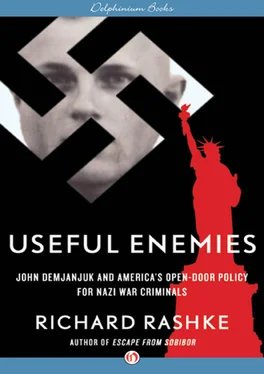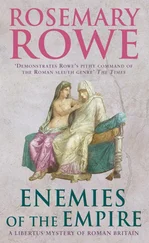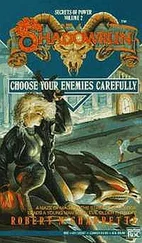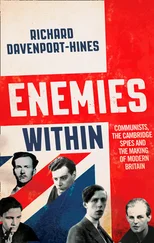• • •
Hanusiak was a member of the Communist Party (CP) and later the Communist Party USA (CPUSA) beginning as early as 1941, when he held weekly CP meetings at his home in Pittsburgh. He was a leader in the America-Slav Congress, a paid field director for the International Workers Organization, and a sponsor of the Civil Rights Congress. All three groups were defined as communist by the U.S. Attorney General.
In the late 1940s, Hanusiak left the CP, disillusioned with its aims and disgusted with its insider politics. The FBI attempted to recruit him in the mid-1950s as a confidential source, but he politely declined to supply the FBI with names of known communists or to spy for the bureau. Sometime around 1972, Hanusiak rejoined the CPUSA and became a member of its National Committee and president of its Nationalities Department. The FBI noted that he made yearly trips to Ukraine, paid for by the Soviet government.
A series of FBI reports, written between February and May 1987 and based on information supplied by confidential sources, were directly related to the Demjanjuk case. It was Michael Hanusiak who “fingered” Demjanjuk (February 13) and was a conduit for the Soviets, who used him to provide “the initial information used against John Demjanjuk… to the Department of Justice, Office of Special Investigation” (April 13). Former OSI director Allan Ryan revealed in his book, Quiet Neighbors , that OSI had relied on a Ukrainian source whom he fictitiously called Wasyl Yachenko. The source’s real name was Michael Hanusiak (April 20).
• • •
It was obvious from reading the list that the Soviet government had directly or indirectly helped Hanusiak compile both the list and the summaries of alleged crimes it contained: who, what, where, and when.
The suspicion of Soviet complicity in compiling what would become known as the “Ukrainian list” was confirmed the following year with the publication of Lest We Forget , a book about Ukrainian civilian collaboration with the Nazis. Edited by Hanusiak and published in Canada, home to more Ukrainians than the United States, the book featured more than 150 pages of field reports and photos of alleged Ukrainian atrocities against Jews; some reports were written in German and some in Cyrillic script. Assuming the documents were not KGB forgeries, they had to come from the closely guarded Soviet archives.
Zutty found himself impaled on the horns of skepticism and pragmatism. The Soviets had consistently denied accredited journalists and international organizations access to the Nazi files it had captured in Berlin and on its long march to get there. Skepticism asked: Why would the Soviets grant rummaging privileges to a Ukrainian American? And why now? Could it be that Hanusiak didn’t rummage? That maybe the KGB prepared the list and gave it to him? Like the CIA, the Soviet spy agency was no stranger to dirty tricks. It was a toss of the coin as to who played dirtier.
Hanusiak himself was no help solving the who-gave-what-to-whom puzzle. He claimed he composed the list from Ukrainian newspaper articles, interviews with editors and journalists, and addresses on letters mailed from America to Ukraine. The explanations limped. How could Hanusiak and communist newspapers know where each of the seventy alleged Nazi collaborators had committed war crimes and which crimes they had committed? How could addresses on letters mailed from the United States provide such information? Either the KGB gave the list to Hanusiak, or it helped him compile it, or it fed the information to the newspapers, editors, and journalists Hanusiak consulted. Simply put, the Ukrainian list had KGB fingerprints all over it.
Pragmatism asked: So what? The names were just leads, like those on the Karbach list. As leads, they were either true or false. Zutty’s job was to figure out which, then to develop solid cases built on the strict rules of evidence required in deportation and denaturalization cases, regardless of where the information came from.
With no investigative staff or budget to speak of, however, it would be impossible for Zutty to open seventy new investigations while juggling a handful of active ones. So he pared down Hanusiak’s Ukrainian list to a more manageable nine names. Two were especially promising—Feodor Fedorenko and Iwan Demjanjuk, both alleged SS death camp guards in Poland. Hanusiak had described Fedorenko as a guard at Treblinka, where he allegedly beat and murdered Jews, and Demjanjuk as a guard at Sobibor. Hanusiak had not, however, attributed any specific war crimes to Demjanjuk as he had to Fedorenko.
If Hanusiak was right, Zutty believed both men were ideal candidates for denaturalization because both had lied on their visa applications. Fedorenko swore he spent the war years farming in the Polish village of Sarny before being deported to Germany as a forced factory worker. And Demjanjuk swore he was a farmer living in the Polish village of Sobibor, not a guard at the camp there.
Fedorenko and Demjanjuk were promising targets for another reason. There were dozens of Treblinka and Sobibor survivors living in the United States and Israel who should be relatively easy to find. They would either recognize the two alleged guards or not, know them by name or not. The other seven targets on the Ukrainian short list had allegedly collaborated with the Nazis in Ukraine as local police officers or members of SS death squads (Einsatzkommandos). Evidence against those seven would require a lot of legwork inside the Soviet Union, and Zutty was short on legs.
There was another positive development for Zutty and his small staff. The State Department had asked Israel for help in collecting evidence against Nazi collaborators in America, and Israel had agreed. Perhaps the Israeli police could find survivors who would positively identify Fedorenko and Demjanjuk as SS camp guards. Gambling on that hope, Zutty asked his new regional boss (Sol Marks had retired) to submit a request to the INS control board for Israeli assistance. To Zutty’s surprise, the board approved, and the pared-down Ukrainian list of nine names with the photographs of eighteen men accused of alleged war crimes left for Jerusalem tucked inside a diplomatic pouch. When the package arrived, the Israeli police made up a photo spread by pasting the eighteen pictures on three pieces of brown cardboard.
• • •
The photos Zutty sent to Israel were deeply flawed and would come back to bite U.S. prosecutors during the 1978 trial of Feodor Fedorenko in Fort Lauderdale, Florida. In l 977, the year before the Fedorenko trial opened, the U.S. Supreme Court set strict rules for the use of photo spreads in American trials and proceedings. In essence, the court ruled that no single picture should call attention to itself. Photos should be the same size and color, and be uniform in appearance, with no single photo brighter or clearer than the others. No single photo should be labeled or highlighted or matched with unfocused pictures. And all photo subjects should have somewhat similar distinguishing characteristics such as age and race. If the alleged criminal was a twenty-year-old Caucasian, the other photos must also be of young Caucasians.
Unfortunately, Zutty’s photos—and consequently the Israeli photo spread—failed to comply with the specifications set by the U.S. Supreme Court. The first six photos on page one of the spread, for example, were smaller than Fedorenko’s (no. 17) and Demjanjuk’s (no. 16). Each photo in the spread was blurred or shadowed except three—Fedorenko’s, Demjanjuk’s, and photo nine on page two, which was also smaller. If that wasn’t invalidating enough, the Fedorenko and Demjanjuk photos were the only two in the spread with large borders, which made them leap off the page.
Читать дальше












